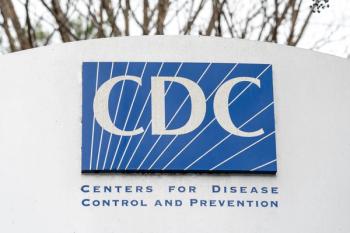
- Drug Topics July 2019
- Volume 163
- Issue 7
Implementing Enhanced Community Pharmacy Services
New study examines effective implementation of team-based care in community pharmacies.
The U.S. population is expanding at an estimated 8% every ten-years.1 As the population ages, both the number of people with chronic conditions and the burden on primary care will increase as well.2 As a result, primary care physicians (PCPs) are tasked with managing all of a patient’s health conditions and coordinating care with other providers. Compounding the problem is the expected shortage of PCPs of from 15,000 to 50,000 by 2030, according to the Association of Medical Colleges.3 To address these concerns, new innovative care models such as
Pharmacists have traditionally been integrated into team-based care (TBC) models in health systems. Now, TBC programs are being expanded to the community pharmacy setting.2 Community pharmacists have demonstrated their value in providing services such as
Trending:
To better understand what drives effective implementation of community pharmacy TBC models, a mixed methods study using implementation science was conducted by Kea Turner, PhD, MPH;
What Is Implementation Science?
Implementation science (IS) is “the scientific study of methods to promote the systematic uptake of research findings and other evidence-based practices into routine practice to improve the quality and effectiveness of health services.”6 The ultimate goal of IS is the improvement of the quality of healthcare, usually beginning with an evidence-based practice (EBP) that is under-used.7 The EBP is then evaluated, and quality gaps at the provider, clinic, or healthcare system level are identified and addressed. It is important to note that IS is not the same as clinical research, since IS studies generally focus on the rates and quality of use of EBPs rather than their effects.7 For example, an IS outcome would measure the number of pharmacists providing hypertension management in a community pharmacy as opposed to the impact of pharmacist-led hypertension management on health status. IS focuses on evaluating the process of implementation and its effect on the EBP.7 A comprehensive discussion of implementation science is beyond the scope of this article, but has been reviewed elsewhere.6,7
CPF Study Grant Synopsis
The study, “
Continue reading on page 2...
Study results showed that community pharmacies that had a clinical pharmacist on staff were significantly more likely to be effective at implementing the CPESN program.8 Further, community pharmacies with a strong climate for implementation were significantly more likely to be effective at implementing the program. Those that had previous relationships with physicians, care managers, and public health agencies were more successful with implementation, as well.8 The study team has taken the research findings and developed an online learning module to provide guidance on how to implement enhanced pharmacy services within community pharmacies.9
Integrating Community Pharmacies into Team-Based Care
There are several major implications for integrating community pharmacists into team-based care from this study. According to Turner and Renfro, it is very important to create a strong climate for implementation within the community pharmacy organization. For example, pharmacies that had sufficient support for carrying out enhanced patient care services were more successful. Pharmacies that provided resources such as adequate staffing and in-depth CPESN training were also more successful. In contrast, putting all of the CPESN workload on one staff member hindered success. Similarly, pharmacies that built their implementation plan as they were going along were less successful than those that had a process in place for managing change. For example, assessing pharmacy workflow for efficiency and having continuous quality improvement measures can be helpful in implementation.
Furthermore, pharmacies that involved the entire staff and had established mechanisms for rewarding or recognizing their staff were also more successful. Communication from leadership about the expectations for staff participation and the importance of the CPESN program were also crucial to successful implementation.
Read More:
Another major finding from the study was that pharmacies varied in the strength of relationships with healthcare organizations and patients. Pharmacies that had previously partnered with physicians or had relationships with other healthcare providers were more successful with CPESN implementation. As a result, the study showed that having resources available for pharmacies who did not have previously established relationships would be beneficial to the implementation of CPESN.
The authors conclude that further research is required to better understand the variation in implementation success that was observed between the high- and low-performing pharmacies by documenting a small set of implementation strategies and comparing them.
Conclusion
The demand for primary care services is increasing as the U.S. population expands and ages. Pharmacists can help bridge this gap. New care delivery models that include pharmacists have already been implemented in primary care settings and are expanding to community pharmacies. As such, payers are looking to involve community pharmacists for their expert drug knowledge and accessibility. One approach is through pharmacy expanded services programs, but little is known about how to implement these programs in the community setting. Results of a Community Pharmacy Grant implementation science study found that having adequate resources, training, and relationships with local healthcare providers were important to the successful implementation of CPESN programs in North Carolina community pharmacies. Further research is required to better understand implementation strategies between low- and high-performing CPESN pharmacies.
References
1. American Academy of Family Physicians.
2. Turner K, Weinberger M, Renfro C, et al.
3. Association of American Medical Colleges.
4. Isetts BJ.
5. CPESN.
6. Eccles MP, Mittman BS.
7. Bauer MS, Damschroder L, Hagedorn H, Smith J, Kilbourne AM.
8. Turner K, Renfro C, Ferreri S.
9. Change Management.
Articles in this issue
over 6 years ago
Opinion: Staying Afloatover 6 years ago
Pharmacists at the FDA: Drug Information Specialistsover 6 years ago
Compounding Industry on the Newest MOU Draftover 6 years ago
Opinion: Your Approach to Hiring is All Wrongover 6 years ago
New Drug Review: Erdafitinibover 6 years ago
10 Ways to Reduce Administrative Costsover 6 years ago
New Institute Aims to Get the Medications Rightover 6 years ago
Vaccinations in the Pipelineover 6 years ago
Health System Specialty Pharmacies Enhance Services and SavingsNewsletter
Pharmacy practice is always changing. Stay ahead of the curve with the Drug Topics newsletter and get the latest drug information, industry trends, and patient care tips.






































































































































